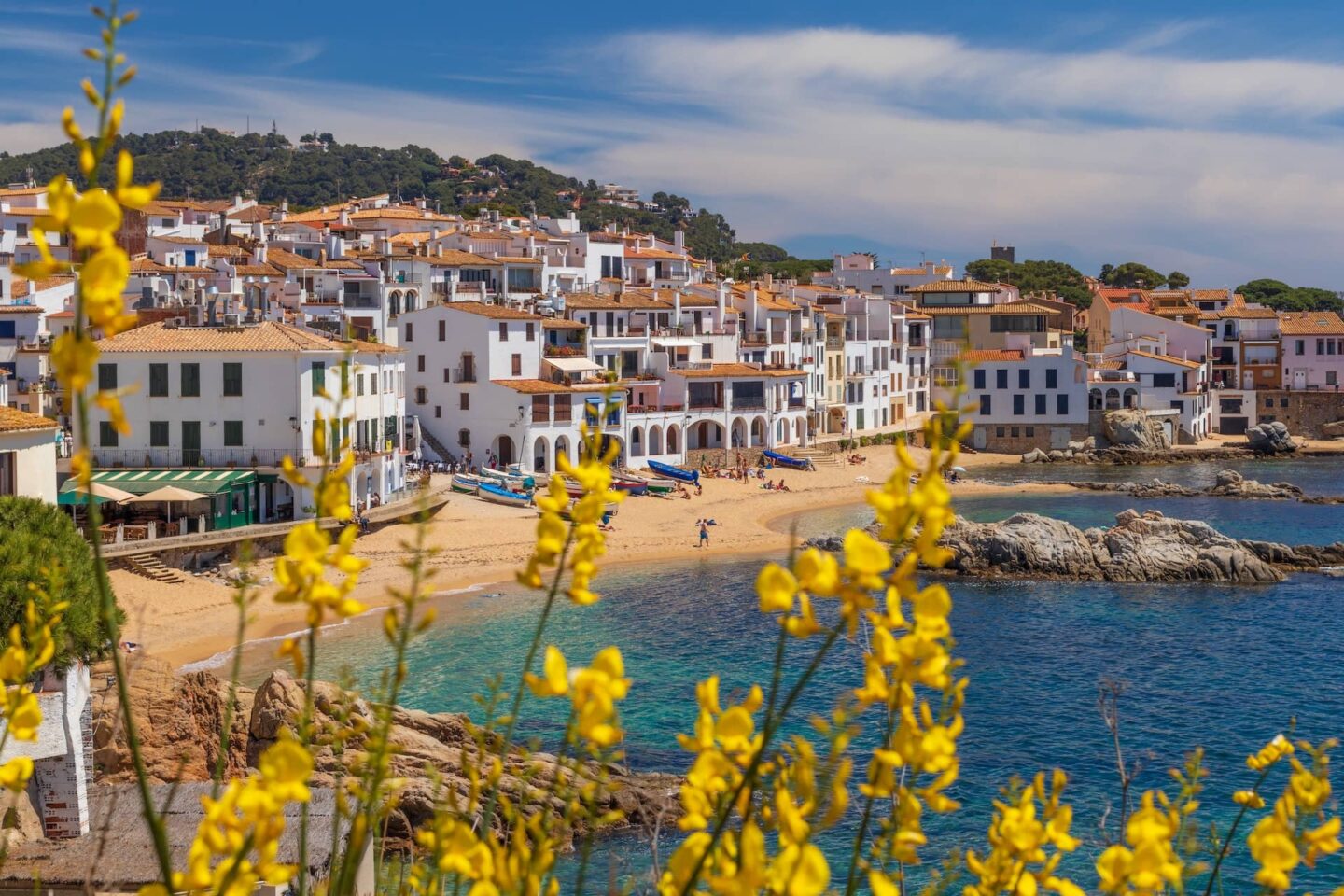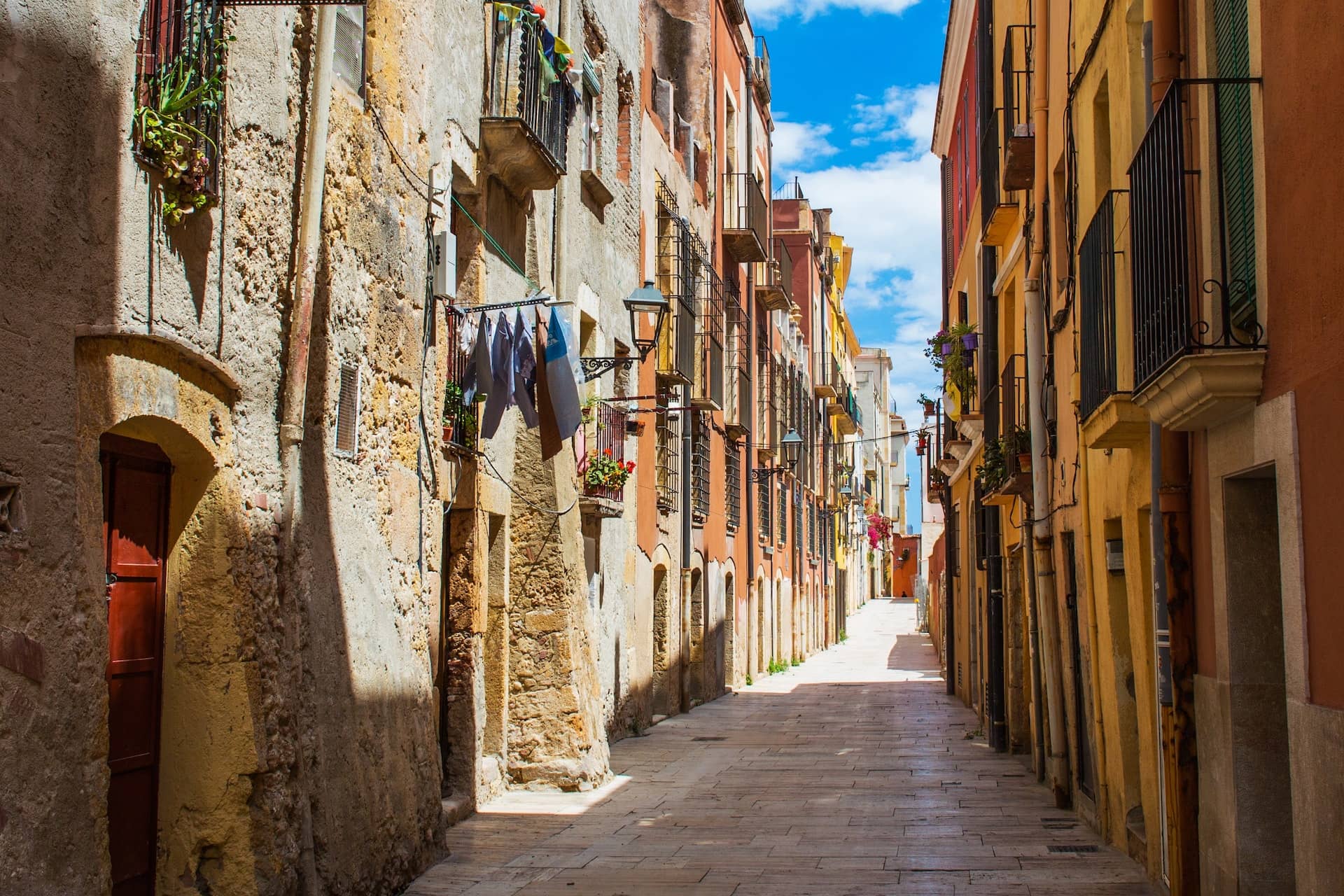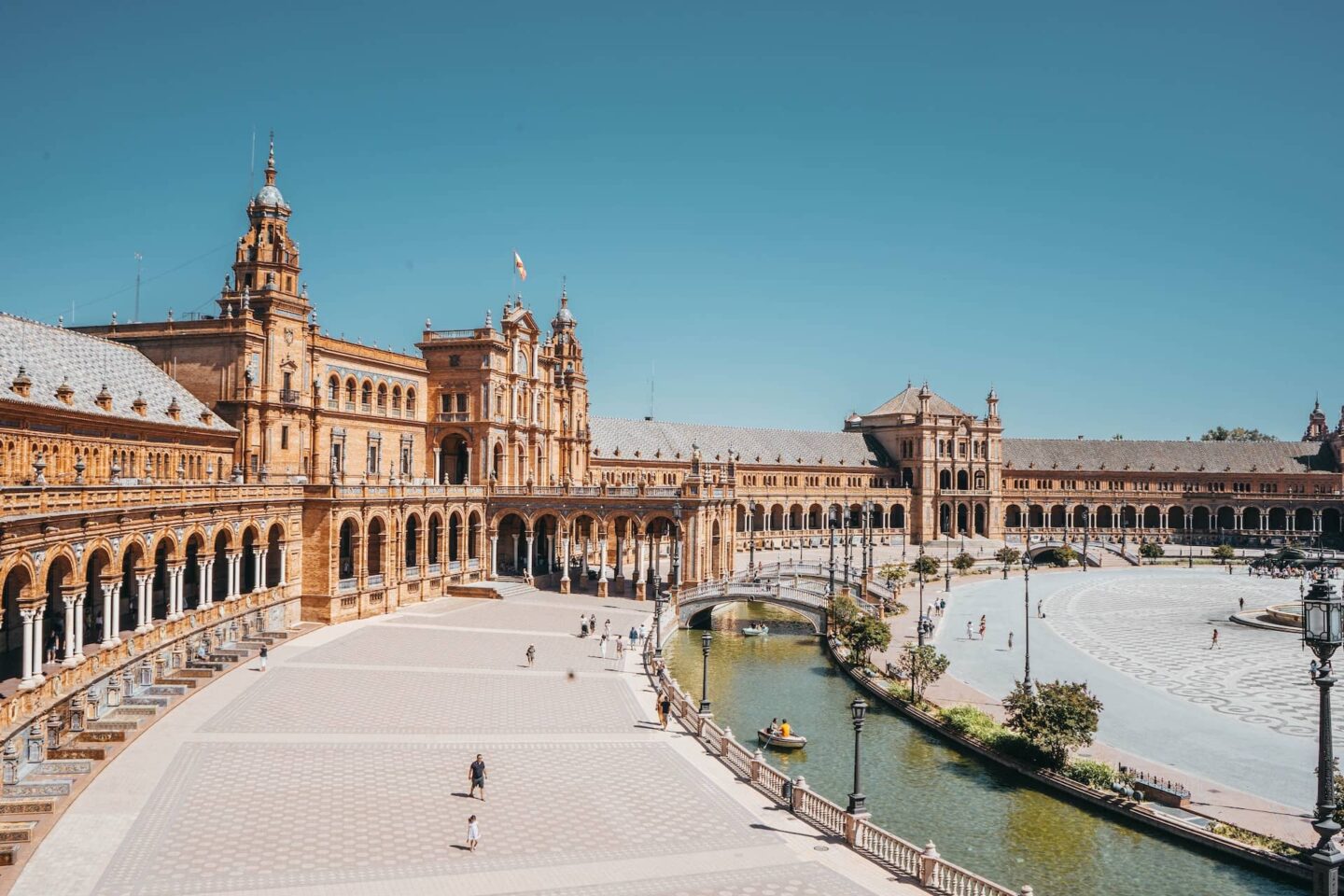Dialects of Castilian and Spanish
As we all know, Spanish is spoken in Spain. However, the Spaniards themselves refer to their language as Castilian, since Spanish developed in the autonomous community of Cantabria in the north of Spain, where the Castilian dialect was spoken. Later, the dialect spread to central Spain, or Castile, and over time it became the official language of the entire country. As many of us know, Spanish is also quite common in South America. However, people there do not refer to their native language as Castilian, but rather Spanish, since the language was brought to their territories by Spanish colonisers.
Although the same language is spoken in both Spain and Latin America, each country has its own dialect, sometimes several of them. For example, in Argentina and Uruguay, ‘y’ and ‘ll’ are pronounced differently in different regions (y = sh, ll = sh or y = y, ll = j); and, for example, instead of the words tú (you) and eres (are), vos (you) and sos (are) are used. The use of the words vos and sos can also be encountered in Chile. In general, ‘y’ and ‘ll’ are pronounced as ‘j’ in Spanish and Castilian, but in Argentina and Uruguay these letters are most commonly pronounced as ‘sh’.
It can be a challenge for people from northern Spain to understand the dialect or accent of the people from southern Spain, as the latter speak softer and omit some of the word endings. Foreigners who speak Spanish may also start doubting their language skills when visiting southern Spain. That’s what happened to me as well. In addition to the several dialects of Castilian within Spain, there are also different languages: Galician, Basque and Catalan. However, these will not be the focus of this blog post. Next, I will write more about the dialects used in Latin America, and after that about the Spanish dialects.

Dialects of Spanish
In Latin America, each country has several different dialects, as well as its own slang, which Spanish speakers from other countries may not even understand. Latin America mostly uses the Amazonian, Caribbean, Paraguayan, Rioplatense, Chilean, Ecuadorian, Mexican, central Colombian, Ribereño, Llanero and Andean dialects. They all differ somewhat in both accent and vocabulary. From this list it may be unclear where Rioplatense, Ribereño, Llanero and even Andean Spanish are spoken. So I will start with introducing these dialects.
The Rioplatense dialect is common, for example, in Argentina, Uruguay, Paraguay and Patagonia. The name of the dialect comes from the name of the river Río de la Plata, located between Argentina and Uruguay. People speaking in the Rioplatense dialect carry an accent that sounds a bit like Italian. They also use the same hand gestures as the Italians and some similar words, such as chau (itciao; en hi). The similarities to Italians come from the large influx of Italian immigrants to Argentina in the 20th century.
Ribereño translates literally as ‘coastal area’. As the name implies, this dialect is spoken mainly in coastal areas of Peru. There are several more dialects in Peru, but Ribereño is the most common of them and the so-called official dialect. Ribereño developed in Lima, the capital of Peru, which was the most important and prestigious city in South America from 1535 to 1739.

Llanero is a dialect spoken in the plains region of the two northernmost countries of South America – Venezuela and Colombia. In Venezuela, this region is called the Llanos region, and in Colombia, Llanos Orientales, Llanos or Orinoquía. This dialect is influenced by the indigenous and Andalusian accent, therefore a musical sound can be perceived in it.
Andean Spanish, or the Andean dialect, is spoken in the mountainous region of the Andes throughout Peru, Bolivia, Ecuador, southeastern Colombia, Argentina and northern Chile . The dialect is mostly similar to the Castilian dialect, but in rural areas elements of the indigenous language can also be detected in it.
The Amazonian dialect can be heard throughout areas close to the Amazon in Colombia, Peru, Venezuela and Bolivia, and at times also in Brazil, although the main language in Brazil is Portuguese. The local dialects of these regions are strongly influenced by many other dialects of Spanish, which in turn are influenced by many local languages, and in some cases also by Portuguese.
The Caribbean dialect is similar to that of Andalusia and is spoken on the Antilles Islands, in Cuba, Puerto Rico, the Dominican Republic, the Colombian Caribbean, as well as some coastal areas of Mexico. The spoken manner of the Caribbean dialect of Spanish is very fast. The Puerto Rican dialect can often be heard, for example, in reggae.
The Paraguayan dialect spoken in Paraguay has been greatly influenced by the Guarani language, which is one Paraguay’s most widely spoken languages. Influences also come from Brazil and Argentina. Almost 87% of the population of Paraguay speaks this dialect of Spanish.

Chilean Spanish is spoken in Chile and partly in the Cuyo region of Argentina. It is influenced by the dialect of Spanish from the regions of Andalusia and Extremadura. This dialect can be difficult to understand because it is spoken quickly and its pronunciation is different, as the ‘s’ is omitted from the end of words. It also contains many slang words that people from other countries may not understand. All Spanish-speaking countries boast large numbers of slang words, but in Chile the count is especially high.
The Ecuadorian dialect is spoken on the Pacific coast of Ecuador and Colombia. This dialect has been strongly influenced by Africa, as there are many people from Africa in the places where it is spoken.
The Mexican dialect is spoken mainly in Mexico, but also in Central America and southern USA. It is considered the most understandable dialect of Spanish by all Spanish speakers, but in fact Mexicans themselves distinguish between the dialects of northern, central and southern Mexico.
The central Colombian dialect is used in the inland regions of Colombia. Within the dialect, official and regional accents can be distinguished. Official accents are used all over the country, while regional accents come from different regions and cities of the country. Influences on regional accent and dialect variation come from the older Spanish dialects – the dialects of Castile, Andalusia and Extremadura. In Colombia, it is customary not to pronounce the letters ‘d’ and ‘b’ at the end of certain words.
Dialects of the Castilian language
Now that we have given a brief overview of the dialects of Spanish in Latin America, we will also talk about the dialects of the Spanish Castilian language. The dialects of the Castilian language are the dialects of Andalusia, Asturias, Aragon, Murcia, Extremadura and the Canaries.
The language spoken in Andalusia is the second most popular dialect of Spanish. As I’ve mentioned before, it sounds softer and smoother compared to other dialects, partly due to the fact that the ‘s’ is often omitted from the end of words. In Andalusia, for example, the verbs of compound words are different from those of the Castilian language. The Andalusian dialect is spoken in southern Spain in cities such as Seville, Ceuta, Melilla and Gibraltar, to name a few. The dialect can be divided into two parts: western and eastern dialect. The dialect spoken in the east has similarities with the dialect of Murcia, and the one spoken in the west with that of southern Extremadura. The western regions are the provinces of Huleva, Seville and Cádiz, the western part of the provinces of Córdoba and Málaga, and the southern part of Badajoz. The eastern part includes the eastern regions of Jaén, Granada, the province of Almería, Córdoba and Málaga. While the Andalusian dialect does have conditions under which Andalusians could be considered a separate nation, some Spanish communities still think that this shouldn’t be done because they do not have a local official language. In addition to the fact that ‘s’ is not pronounced, in this dialect ‘b’ is often pronounced like ‘v’. Instead of ‘s’ they say either ‘h’ or nothing at all. Similarly, sometimes ‘d’ is also not pronounced. For example, instead of the word ‘bebido’ they say ‘bebío’. This word has an accent on the ‘i’, which means it is pronounced longer, like ‘ii’. The Andalusian dialect has many other special features that distinguish it from other dialects, but this would already be a separate topic of research.
In Spain, the Asturias dialect is also spoken. Asturias is a region in northern Spain. This dialect has been preserved on a very large scale. In addition to the region of Asturias, it is also spoken in the city of León or Babia, sparingly in Zamora and in the autonomous community of Castile y Leon. The Asturias dialect differs from Castilian, for example, in that some words are gender-neutral and there are no tense forms of compound verbs. This dialect is endangered because of its 400,000 speakers, not all pass it on to their children. In addition, it has not been made official. The dialect is also mostly used at home, it is not used in public administration, such as during formal procedures or in hospitals. At the same time, over the past 40 years the Asturias dialect has become more culturally valued. The dialect used to have a bad reputation. During Franco’s dictatorship (1936–1975), it was outright forbidden, since only Castilian was allowed. The Asturians, however, want their dialect to be made official so that its reputation would improve.
The now official dialect of Aragon spread around the beginning of the second millennium even to Murcia, an autonomous community in southern Spain. Aragon is an autonomous community in northern Spain. Today, several expressions from the Aragon dialect are still in use in Murcia. In general, the dialect is currently used in northern Aragon. In the south and west its borders are blurred. The Aragon dialect began to disappear when the Castilian dynasty entered Aragon, which is why the Aragonese began to lose both geographical and social position. The Castilian language spread, and thus the Aragon dialect became inappropriate. The Spanish Civil War (1936–1939) and depopulation also caused the recession of the Aragon dialect. Although the dialect is seldom used, it is still taught in some schools, and literature, magazines and music is published in the Aragon dialect. Although the dialect is mostly used in northern Aragon, the entire region of Aragon is pushing for a large-scale restoration of the dialect.
The dialect of Murcia is currently spoken only in the autonomous region of Murcia. Due to the low number of speakers of the dialect and the influences of the Castilian language, it is in danger of extinction. Its emergence was influenced over time by the Aragon dialect and especially by the Catalan language. Real Academia Española (RAE) has accepted many expressions of the Murcian dialect and formally presents them as expressions of the Murcian dialect. RAE is a cultural institution and website where you can find explanations for Spanish equivalents and where you can find out how to conjugate words.

The language spoken in Extremadura is quite diverse. In Extremadura, an autonomous community southwest of Andalusia, three dialects in addition to Castilian are used, which, although they have been in use for ages, have still not been made official. Dialects have been preserved thanks to being consistently passed onto successive generations. The dialects spoken in Extremadura are Fala, Portugués rayano and Extremeñu, all of which are recognised by international organisations like the Council of Europe and UNESCO. Fala is the most common of them to date. At the same time, the dialects are in danger of extinction, one of the reasons being that Extremadurians consider themselves to speak a bad form of Castilian language, and thus use a mix of their dialect and Castilian words. Pure dialect is mostly used by the elderly or middle-aged people. All three language variants have emerged thanks to people migrating from one part of the country to another, and have also been influenced by Portuguese, Galician and Asturian. The dialects are currently spoken in the border region of Andalusia, Castile-La Mancha and Castile y Leon.
The Canary dialect has connections with that of western Andalusia. In the Canaries, too, ‘s’ is sometimes omitted from the end of words. At the same time, ‘z’ and ‘c’ are pronounced like ‘s’. While elsewhere in Spain the word ‘you’ (plural) is vosotros, in the Canary dialect it is instead ustedes, as in Latin American Spanish. Portuguese has also had some influence on the dialect. In the Canaries, more emphasis is placed on the tone of speech and the diminutive -ito suffix is used. For example, instead of the Spanish word pequeño (small), the Canaries often say pequeñito (tiny). Historically, the dialect has been influenced by the Caribbean countries of Latin America, such as Cuba, Venezuela and Puerto Rico. It is possible to distinguish between the dialects of Tenerife and Gran Canaria of the Canary Islands, the differences of which are mainly in vocabulary.
Conclusions
The number of dialects in both Castilian and Spanish is immense. Although at times it can be difficult for Spanish or Castilian speakers to understand each other, with a little effort it should nevertheless be possible, since all the dialects are based on the same Castilian language. Languages, however, are another story. For example, even Spaniards do not understand Basque. Of all the dialects, the Mexican dialect is considered the most understandable and neutral.
Sources used
El aragonés o lengua aragonesa. Gobierno de Aragón. https://lenguasdearagon.org/el-aragones/
Epac 2020. La realidad lingüística en Extremadura – Daniel Gordo. – Journal of Language and Blog, 1. oktoober. https://eapc-rld.blog.gencat.cat/2020/10/01/la-realidad-linguistica-en-extremadura-daniel-gordo/
Español peruano ribereño 2010. Academic. https://es-academic.com/dic.nsf/eswiki/446009
Frago, Juan Antonio; Martín Zorraquino, María Antonia 2015. Aragonés y asturleonés, dialectos históricos del latín (y su situación actual). De Gruyter. 8. Aragonés y asturleonés, dialectos históricos del latín (y su situación actual) (degruyter.com)
Hernández, Alicia 2022. Dónde se habla el bable y por qué dicen que es un idioma „en peligro”. – BBC News Mundo, 24. jaanuar. https://www.bbc.com/mundo/noticias-internacional-59547573
Hernández, Esperanza 2020. En Murcia se habla catalán. Murcia Plaza. https://murciaplaza.com/en-murcia-se-habla-catalan
La Información 2019. Cómo es el dialecto que se habla en las Islas Canarias. https://www.lainformacion.com/practicopedia/como-es-el-dialecto-que-se-habla-en-las-islas-canarias/6509057/
Manzano, Alí 2017. Lengua Andaluza: ¿Idioma, modalidad lingüística o dialecto? – Pensamiento Andaluz, 4. september. https://pensamientoandaluz.org/index.php/ali-manzano/145-lengua-andaluza-idioma-modalidad-linguistica-o-dialecto.html
Organos de Palencia 2021. ¿Cómo se habla el español llanero?
https://organosdepalencia.com/biblioteca/articulo/read/133065-como-se-habla-el-espanol-llanero
Otero, Miriam 2019. Extremadura y sus tres lenguas. Extremadura 7 Días. https://www.extremadura7dias.com/noticia/extremadura-y-sus-tres-lenguas
Peruvian Ribereño Spanish i.a.Google Arts & Culture.
https://artsandculture.google.com/entity/peruvian-ribere%C3%B1o-spanish/m0dq0q6?hl=en
Ríos, Bernardo i.a. Un repaso a la multiplicidad de las hablas andaluzas.Geografía Infinita.
https://www.geografiainfinita.com/2020/05/un-repaso-a-la-multiplicidad-de-las-hablas-andaluzas/
Spanish Dialects – Different Types of Spanish Around the World 2021. Ehlion Magazine. https://ehlion.com/magazine/spanish-dialects/
Tortosa, Lourdes Egea i.a. El dialecto Murciano.Universidad de Murcia. https://www.um.es/documents/2918258/18876579/P%C3%B3ster_HyA_IES+Marqu%C3%A9s+de+los+V%C3%A9lez.pdf/62bc1e28-de96-4a33-94b8-8d1b35de87f8
Check out these other posts from our blog

The immeasurable contribution of African American English to world language use

Localisation or translation?

